- News
- Reviews
- Bikes
- Accessories
- Accessories - misc
- Computer mounts
- Bags
- Bar ends
- Bike bags & cases
- Bottle cages
- Bottles
- Cameras
- Car racks
- Child seats
- Computers
- Glasses
- GPS units
- Helmets
- Lights - front
- Lights - rear
- Lights - sets
- Locks
- Mirrors
- Mudguards
- Racks
- Pumps & CO2 inflators
- Puncture kits
- Reflectives
- Smart watches
- Stands and racks
- Trailers
- Clothing
- Components
- Bar tape & grips
- Bottom brackets
- Brake & gear cables
- Brake & STI levers
- Brake pads & spares
- Brakes
- Cassettes & freewheels
- Chains
- Chainsets & chainrings
- Derailleurs - front
- Derailleurs - rear
- Forks
- Gear levers & shifters
- Groupsets
- Handlebars & extensions
- Headsets
- Hubs
- Inner tubes
- Pedals
- Quick releases & skewers
- Saddles
- Seatposts
- Stems
- Wheels
- Tyres
- Health, fitness and nutrition
- Tools and workshop
- Miscellaneous
- Tubeless valves
- Buyers Guides
- Features
- Forum
- Recommends
- Podcast
feature
Are modern bikes really so much better? Comparing vintage vs new road bikes for ride quality, aero, weight, gearing + more
Bikes have changed quite a lot in the last two decades, particularly road bikes. They now invariably have disc brakes, integration is rife, changing gears is now done with electrical signals rather than a cable, tyres have ballooned... and don't even get us started on hookless or tubeless tech! This 'progress' often divides cyclists. and the road.cc office is no different: I believe that bikes have changed for the better, while road.cc founding father Dave has much more nostalgic views. We decided to head out for a ride to prove each other wrong...
Team Modern
Not everyone at road.cc shared my enthusiasm when the latest Pinarello Dogma X rocked up for its upcoming review. Pinarello says that it "strikes the perfect balance between high-calibre performance and real-world comfort", and in my mind, it's the quintessential modern road bike.
The Dogma X has space for wide 35mm tubeless tyres, it has 12-speed Shimano Dura-Ace Di2 electronic shifting, a sleek integrated front end, endurance geometry, disc brakes, and at £13,300 this particular model really should be the ultimate money-no-object road bike for riders want both speed and comfort.
Team Classic
> 8 bygone bike technologies we're now well rid of
Dave, on the other hand, would argue that the 24 additional years of development have been wasted, and he’d much rather spend his money on something with a bit more history.
Dave's bike of choice to turn back the years is the Colnago CT1 Titanio Lux from the year 2000 (yep, that counts as 'vintage' now... sorry to anyone born before about 1990). It consists of a titanium frame with a carbon fork and rear triangle.
> Cycling trends and traditions that are gone but not forgotten
It too has a Dura-Ace groupset (The 25th-anniversary edition) but "like most things from back then" things were a lot simpler. It’s got mechanical gears and rim brakes.
In Dave's words, the bike "looks absolutely stunning and feels as fast as a knife fight in a phone box." I was quick to point out that even his analogy was outdated, and he'd highlighted another relic that has been superseded by modern tech...
Having had a good poke around the Colnago, I was sure that it was great in its day, but was fairly confident that my modern bike was simply better in every way.
Weight
With the advances in materials, computer-aided design and just a few more years of practice, you might think that the Colnago would be significantly heavier than the Pinarello; but that's simply not true.
The Colnago weighed 8.1kg on the road.cc scales of truth, and the Dogma X came in at 7.18kg.
> How to make your bike lighter
The weight of the CT1 did plummet further, before creeping back up as manufacturers favoured aero tube shapes, disc brakes and fatter rubber. Regardless of the reasons why, we certainly haven't seen progress come on leaps and bounds in the weight department.
Verdict: With no real progress in this area, round 1 goes to Team Retro
0-1
Gearing
It didn't take many miles of riding for Dave and I to realise some pretty significant differences in the gearing of our bikes. There's the obvious differences such as the fact mine is electronic and has 24 gears as opposed to 18, but it wasn't either of these that surprised us most.
The Dogma X has fairly typical gearing for a modern endurance bike with 50/34T chainrings at the front and an 11/30T cassette at the rear, which gives the smallest gear ratio of 1.13:1.
> Bike gears: find out why bikes have so many, and the surprising way they're measured
The Colnago is also representative of its time, with full-size 53/39T chainrings and a 12/25T cassette. Dave's lowest gear ratio is therefore 1.56:1, i.e. much much bigger.
After murmurings that modern cyclists simply need to "harden up", it didn't take too many rollers to convince Dave that gearing on bikes has dramatically changed for the better.
Full-sized rings are great if you're a pro bike racer with legs made of steel, but for the rest of us, semi-compact, compact and sub-compact chainsets make a lot of sense. Pair ,that with today's much wider range cassettes and you make the terrain of an average UK road ride a lot more manageable without the sore knees.
Verdict: A thorough thrashing. Team Modern wins
1-1
Geometry
> Should I buy a race bike or an endurance bike?
When Giant released the TCR in 1997, it introduced the world to compact frame geometry (I can only assume by the medium of fax and a CD). This new-fangled way of thinking about bike frames didn't take off immediately though, and the CT1 released in the year 2000 still has what many would call "classic lines".
Fast forward two decades to the release of the Dogma X, and we're well used to sloping top tubes and bits of exposed seat post. Recent bikes like the Dogma X have been at the forefront of another revolution though, one towards 'progressive' endurance geometry.
Compared to the CT1, the Dogma X has almost gravel bike-esque geometry, with a much longer wheelbase, longer chainstays and more trail (the front wheel is much further in front of you). Much of this elongation is to accommodate wider tyres, but Dave argues that this has made modern bikes feel a lot less lively.
Excuse the cringe-worthy bike reviewer speak, but the CT1 is far more involving to ride: sometimes for the better, sometimes for worse. On a smooth road, it feels lively and rather fast. Get to a descent though, and this liveliness isn't always as welcome. You can also fee every single road imperfection.
> Bike geometry 101: Learn why frame angles & trail matter
Choose the right road, at the right time of year, and the Colnago is a very rewarding bike to ride; however, on any B-Road the Pinarello's frame geometry easily comes up trumps, and is overall a much easier bike to ride in more situations.
Verdict: It's hard to ignore that some dynamism has been lost on today's endurance bikes. Easy or engaging? Take your pick
2-2
Tyres
> Should you get tubeless tyres?
The Colnago CTI Titanio Lux is rolling on a set of 23mm wide Veloflex clinchers (sorry tubular fans). The Dogma X, meanwhile, is on 32mm Continental GP5000 S TRs, set up tubeless with plenty of frame space for even wider.
It's well documented that tyres are getting wider, but considering how similar certain elements of these two bikes are it's hard to see how both were designed for the same purpose just over two decades apart.
Personally, I think tubeless tyres on gravel bikes and mountain bikes make a lot of sense, and this opinion extends as far as the super wide road bike tyres on the Dogma. Whether tubeless technology is genuine progress, Dave would argue that being sprayed in a latex-based fluid is less than ideal, and I think we've got plenty of progress yet to make in this area.
We did both agree that wider tyres are simply the way to go. We now know that in the real world they aren't any slower (even if they feel it), they're much more comfortable, and while Dave tip-toed around cracks, debris and potholes in the road, I was able to relax and plough straight through.
Verdict: How didn't we realise sooner?
3-2
Integration
Look at the Dogma X, and you'll be hard-pressed to find any exposed cable or hoses. They run cleanly through the bars and stem, inside the headset spacers and bearings and then down the inside of the fork and frame. It certainly looks tidy, but is also just about every home mechanic's worst nightmare.
> Has the move to full internal cable routing on road bikes been worth it?
Dave hammered home the point that if I wanted to make even a fairly minor change in my position on the Pinarello, then it would likely incur several hours of expensive labour costs, or an entire day of nonstop swearing.
Bikes without this fully integrated approach are getting fewer and farther between, choosing to marginally improve aesthetics at the expense of simplicity and maintainability.
Verdict: Sometimes less is more
3-3
Aero
One of the major reasons that bikes haven't got significantly lighter in the last 24 years or so is that manufacturers have realised that aerodynamics plays a far bigger role in the speed that we can travel than we ever thought.
Aerodynamics don't just apply to pros or budding racers either, as many of us want to travel further or faster for less effort. This has meant that modern road bikes are sculpted by CFD software and in wind tunnels. Even an endurance bike such as the Dogma X has deep kamm tail tube profiles.
> Aero vs lightweight road bikes
Dave argues that he doesn't care if he saves 20 seconds over 40km of riding, and not so long ago I probably would have agreed. Aero bikes were cumbersome machines which sacrificed every ounce of comfort in order to gain a few seconds.
The latest iteration of bikes though, such as the Dogma X, manage to combine wind-cheating abilities with all the other parameters that make a good road bike. Although we don't have a wind tunnel, I don't think that too many people are going to argue that classic bikes are as aerodynamic as modern ones.
Verdict: Unfortunately for Dave I'm writing this article not him, so I'm giving the point to Team Modern. #freespeed
4-3
Disc brakes
Controversial! Or has that whole debate finally blown over?
It might surprise you that even when fighting for the disc brake corner, I don't think that the braking performance is inherently bad on rim brakes. The Colnago has Ambrosio aluminium rims, and it's hard to believe that the braking system is as old as it is. The limiting factor is most definitely the tyre on the tarmac and not the pads on the rim.
> 8 reasons not to get disc brakes
However, I don't think that outright stopping power or even the modulation of disc brakes is their biggest selling point. It's no coincidence that the disc brake revolution has coincided with greater frame clearances, and we can now use wide stable wheels paired with comparatively fat tyres because they no longer have to fit within a calliper that was often limited to 28mm.
A further positive of disc brakes is the fact that although it might seem harrowing to use a set of very expensive wheels on wet rides, disc brakes mean that it's a far less daunting prospect than in days gone by. Not only is the braking consistent (rim brakes on carbon wheels had...mixed results), but you're not wearing out your fancy wheels.
Verdict: Disc brakes are progress but not for the reasons you might think
5-3
Materials
Carbon fibre is a wonder material that is now everywhere; even running shoes now include the stuff. Chances are if you're buying a high-end performance bike, it will be made of this magical composite. But it's not completely new.
Even back in the year 2000, carbon fibre was being used in bikes. The CT1 not only has a carbon fork, but also a carbon rear triangle. Carbon is good because it's extremely light for its strength, and manufacturers can tailor its properties depending on the location within the frame.
> What type of road bike should you buy in 2024?
Carbon fibre has enabled designers to be more adventurous with their designs, sculpting complex shapes which blend both stiffness and compliance. The main drawback of carbon fibre is its impact strength.
In the future, we could see a resurgence of metal bikes as 3D printing comes to the fore. For example, we saw Filippo Ganna break the hour record on a 3D-printed Pinarello Bolide F HR 3D track bike. Could this be the norm in 25 years time?
Verdict: Modern-day materials are simply better. If you don't like carbon then there's still plenty of aluminium, steel and titanium options though
6-3
Stiffness
For the final part of our test, we decided to swap bikes. The Colnago certainly felt snappy in comparison to the cruisey Dogma X.
Out the saddle it also felt plenty stiff enough. I was expecting some wallowing from the aged frame, but it felt tight and direct. This was likely helped by the 23mm tyres pumped up to an obscene pressure.
The main difference in my eyes between the two bikes was how comfortable they are. Your wrists tire much quicker on the Colnago, as did my rear end. Sure, the wide tyres, more advanced saddle and carbon bars can all take some responsibility for this increased comfort, but it's also likely that the frame is more compliant.
Verdict: The stiffness has improved, but it's the newfound compliance that has a bigger impact on how the two bikes feel to ride.
7-3
So, does retro rule?
On a day that started with an argument, one thing had become very clear: we both absolutely loved meandering around the Cotswolds on our respective bikes.
There's now plenty that we can agree on. The simplicity of bikes from yesteryear is undoubtedly a positive, and we both hope that it's still possible to buy bikes without fully integrated front ends in the future. Mechanical groupsets and rim brakes still work just fine.
We've also come to the conclusion that gearing, geometry and tyres are all areas that it's hard to deny have improved over the last two decades or so. Road bike gearing is now much more appropriate to the average Joe (or Dave or Jamie), the laid-back geometry approach of late allows for more control and comfort over long distances, and it's a miracle none of us realised that wider tyres are so much better sooner.
So, are modern bikes rubbish? In our opinion, absolutely not; but it is fair to say that they are completely different beasts. Just like a classic car, with a little bit of love and attention, older bikes are still perfectly capable of enabling you to experience the full joys of cycling.
However, for my everyday riding, I'll be sticking to the here and now. Buy a new bike with your head, buy a classic one with your heart.
Let us know which of these lovely bikes you’d choose in the comments below, and if you think bikes have changed for the better.
Jamie has been riding bikes since a tender age but really caught the bug for racing and reviewing whilst studying towards a master's in Mechanical engineering at Swansea University. Having graduated, he decided he really quite liked working with bikes and is now a full-time addition to the road.cc team. When not writing about tech news or working on the Youtube channel, you can still find him racing local crits trying to cling on to his cat 2 licence...and missing every break going...
Latest Comments
- Mr Blackbird 2 sec ago
I'm not suggesting that anybody give in to the IDSs of the world. But why give them ammunition, if it can easily be avoided.? Avoiding breaking the...
- mdavidford 35 min 34 sec ago
They both start with 'A' and are six letters long, though
- espressodan 47 min 32 sec ago
Work in IT. Cannot for the life of me figure out what could possibly be so inflexible about IT infrastructure.
- wtjs 1 hour 15 min ago
after I said that if they wouldn't tell me the outcome of a submission I would have to make an FOI request for it...
- Bungle_52 1 hour 22 min ago
In Gloucestershire I've been having an email dialogue with Robert Vestey who has recently decided that close passes will get an advisory letter...
- Sriracha 1 hour 44 min ago
Lidl have a window poster emblazoned, "Black Friday. Starts Sunday".
- Dnnnnnn 1 hour 49 min ago
I take "rat running" to be taking shortcuts through streets which aren't really suitable (at least when lots of people do the same thing)....
- Rendel Harris 2 hours 47 min ago
Note that only one of them was actually used by him as a race bike (the 2010 Madone) and that not in his "glory" years, I'm sure one of his Tour...
- David9694 3 hours 16 min ago
You have to wonder how many drivers are merrily writing-off their cars this way. Nearly all the coverage is flooding related - Chippenham and...


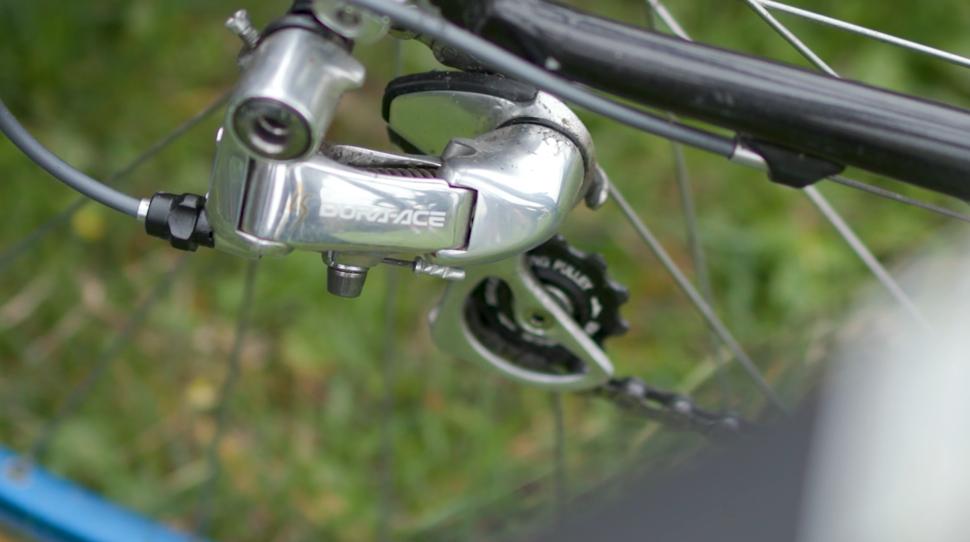

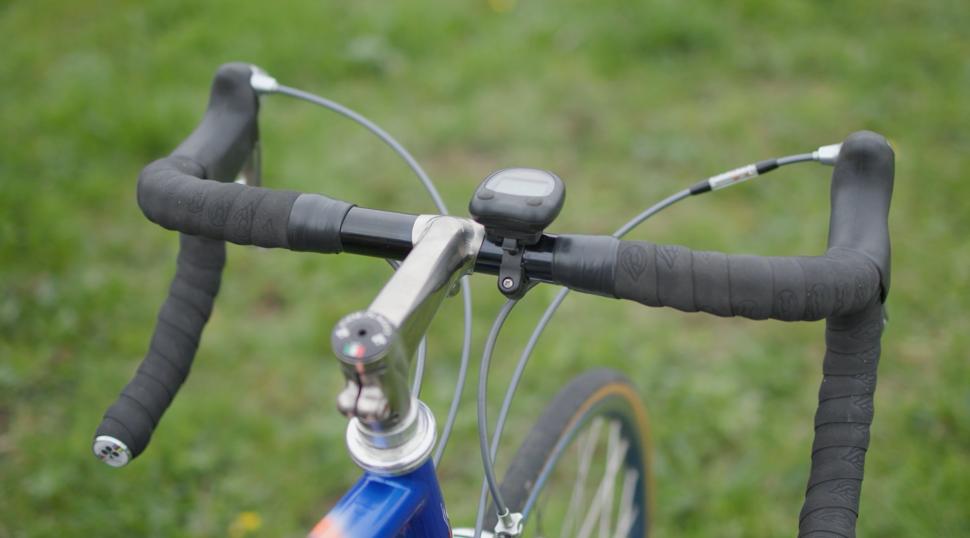
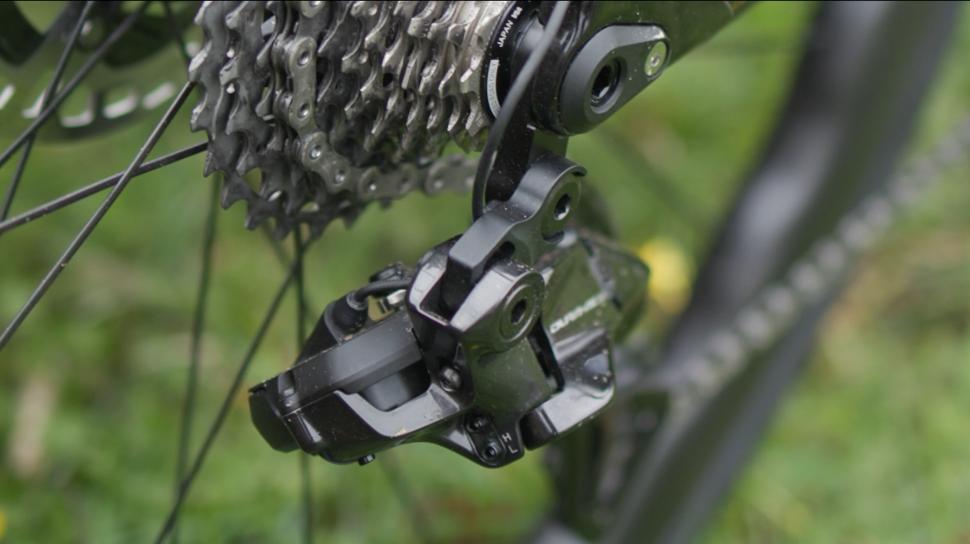
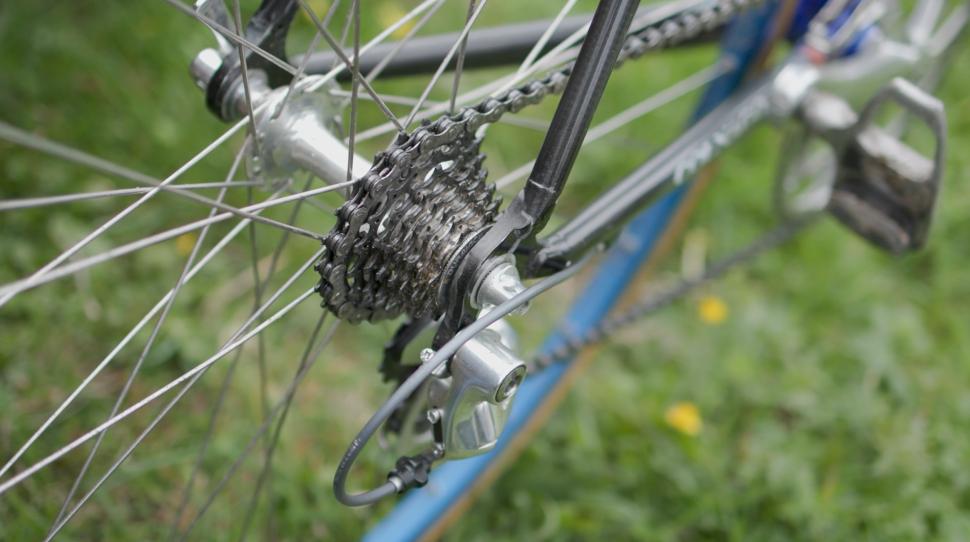

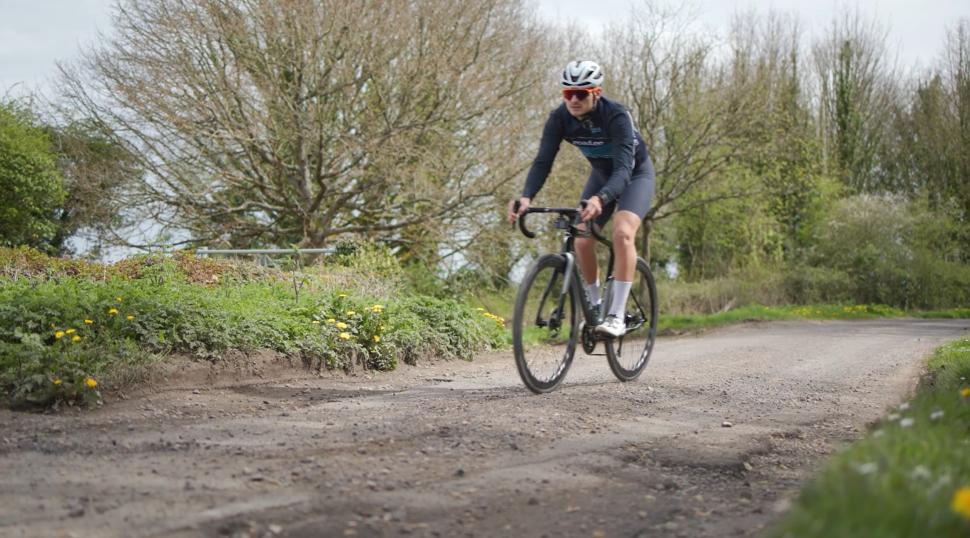
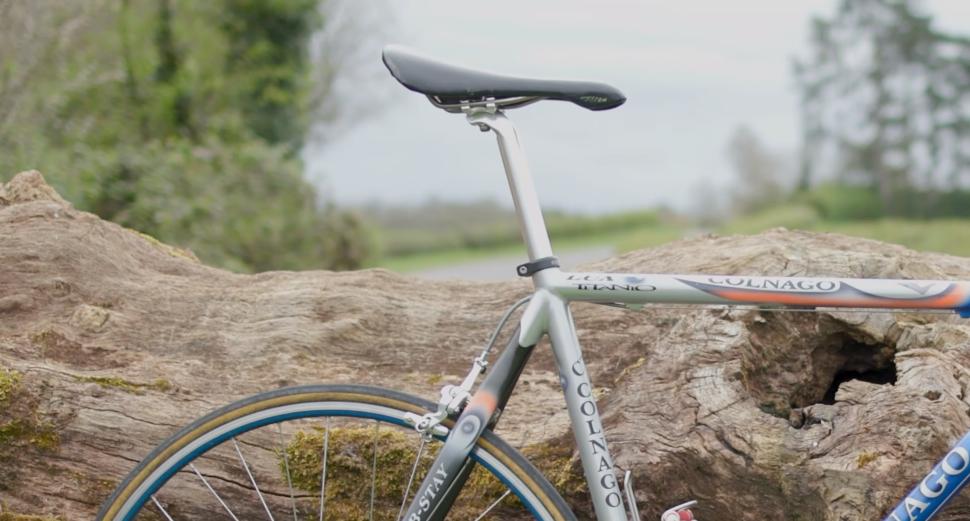
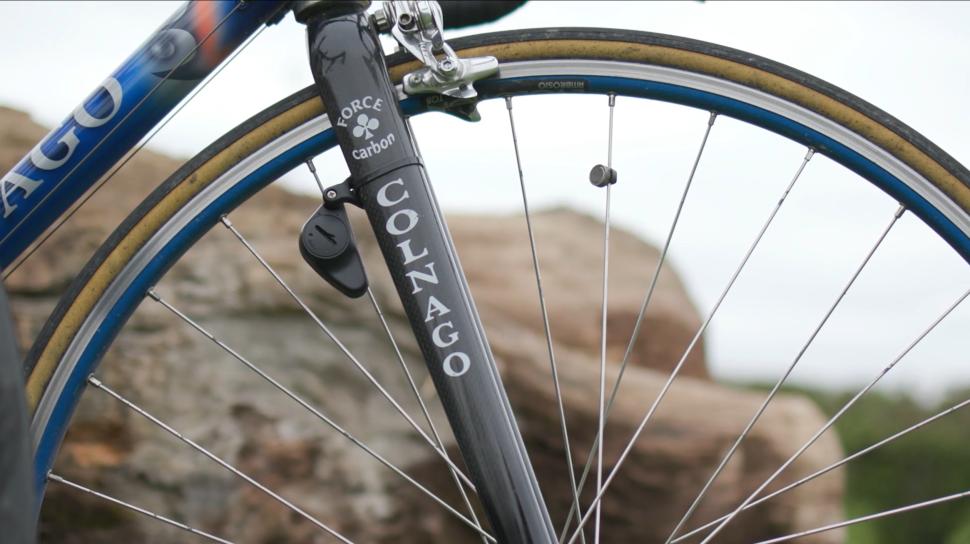
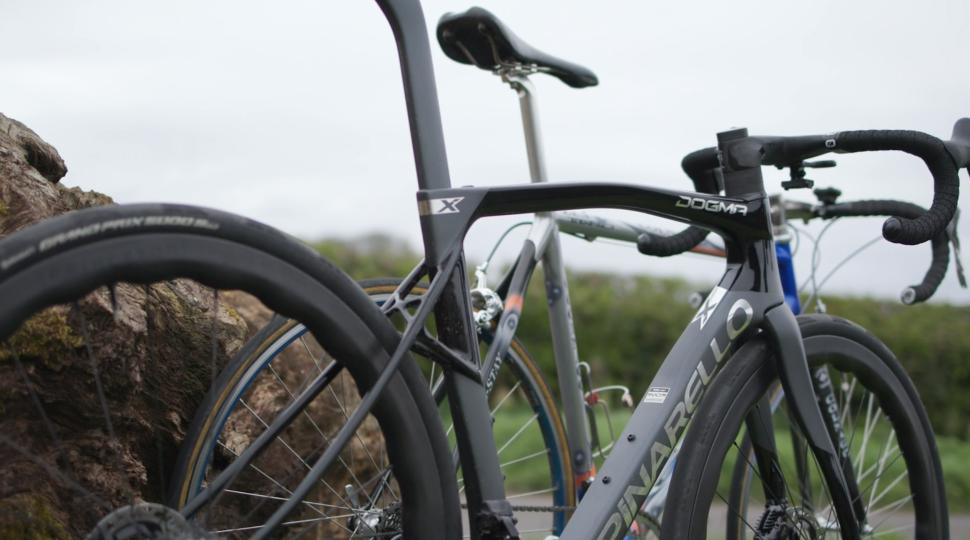
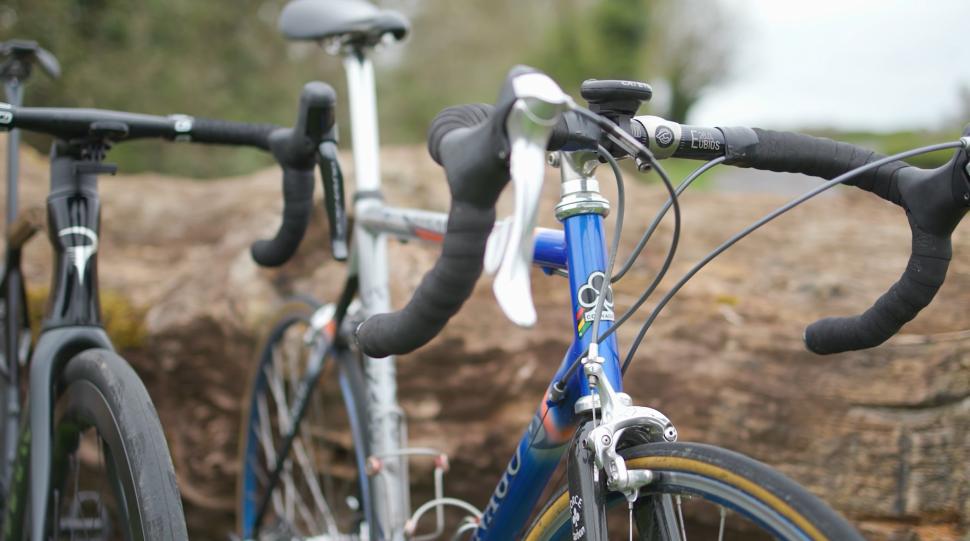
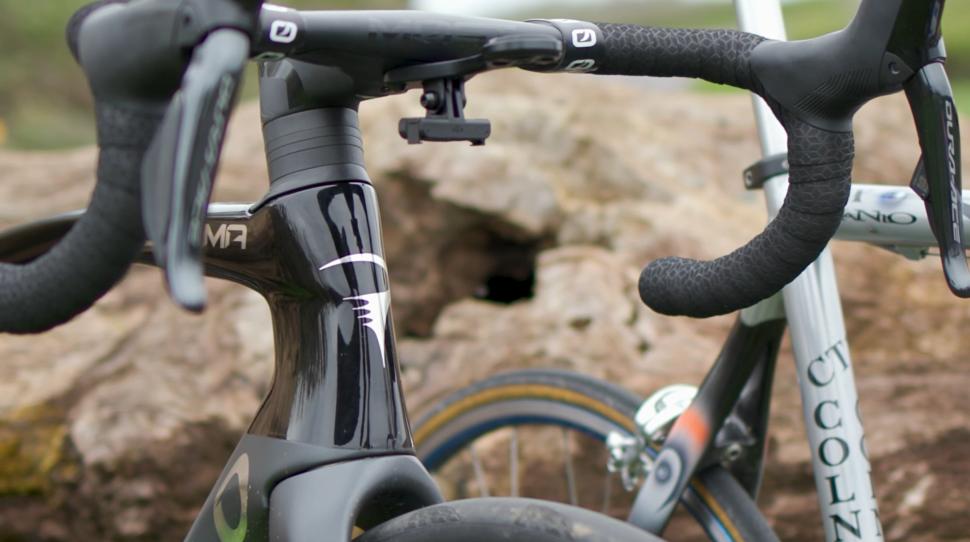
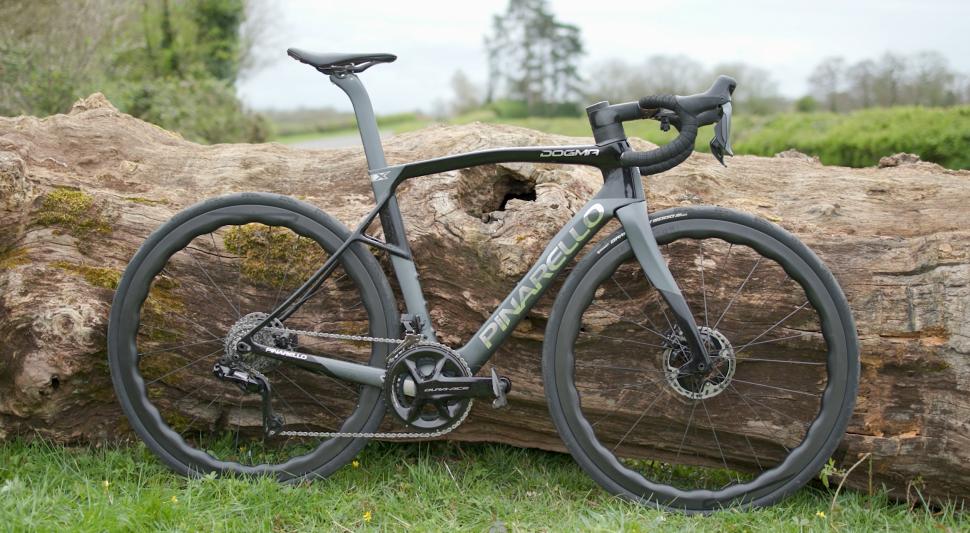
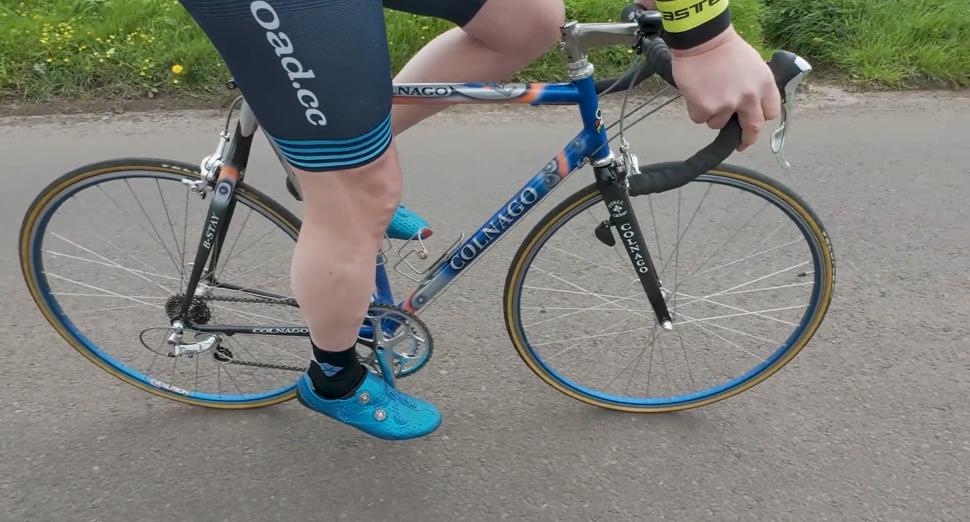
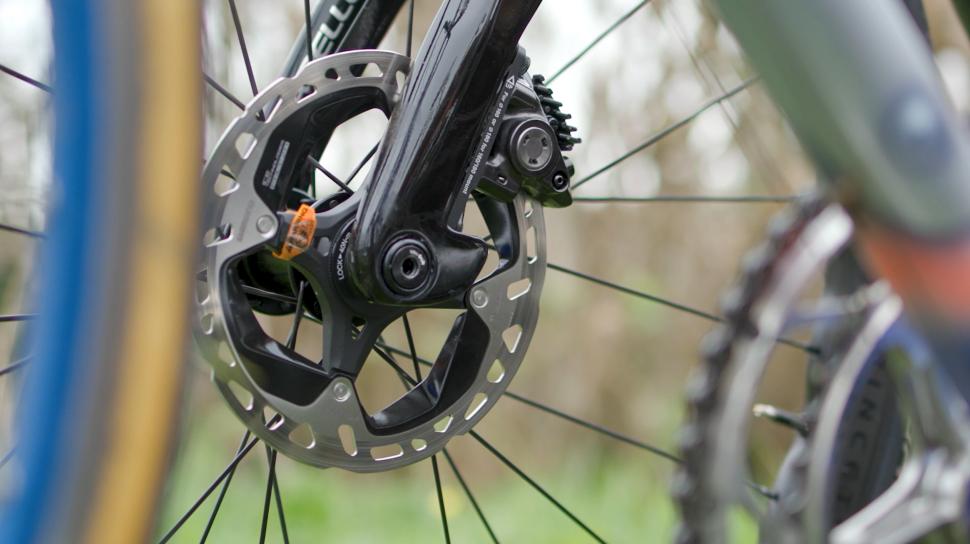
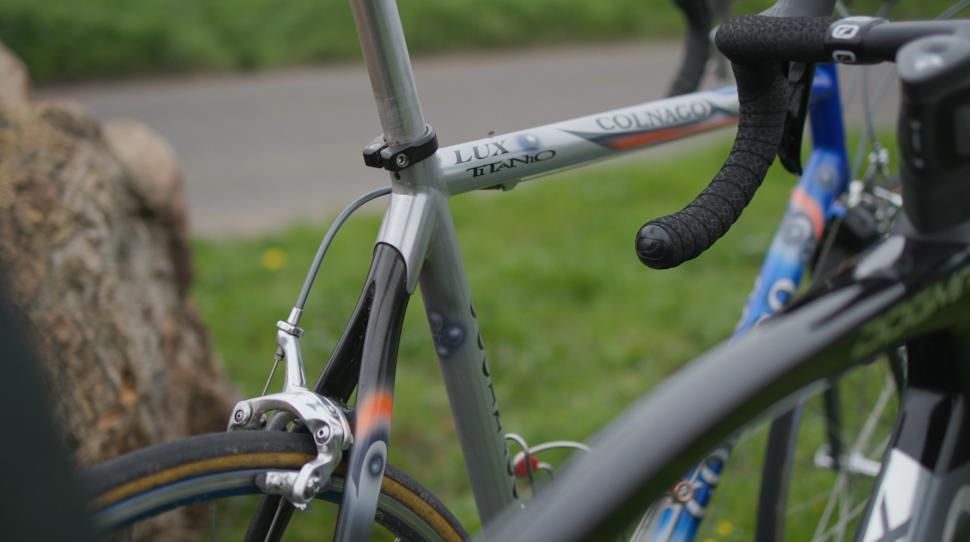
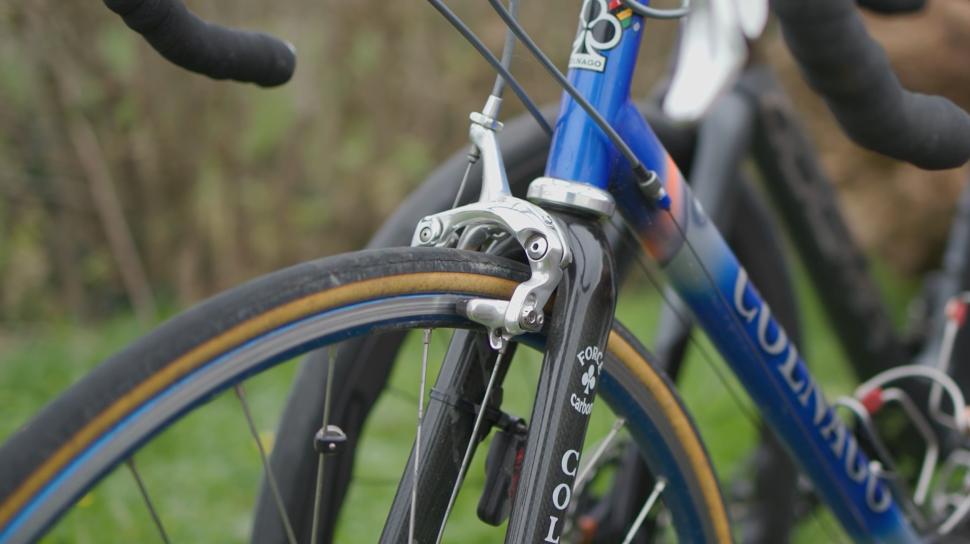

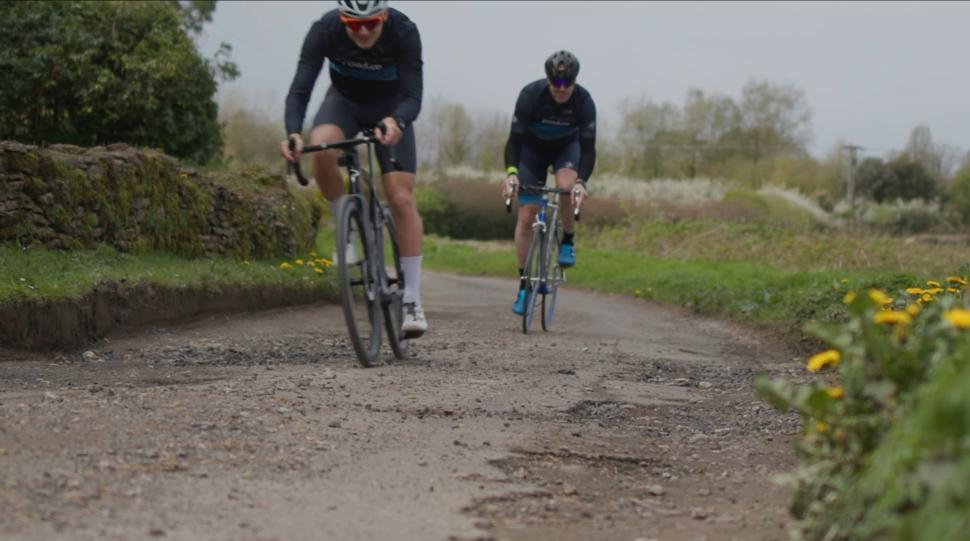

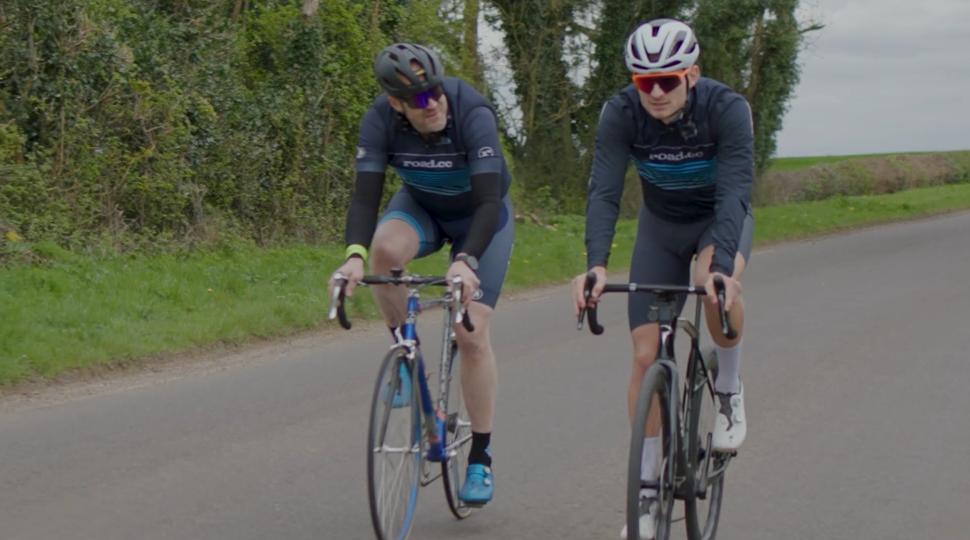
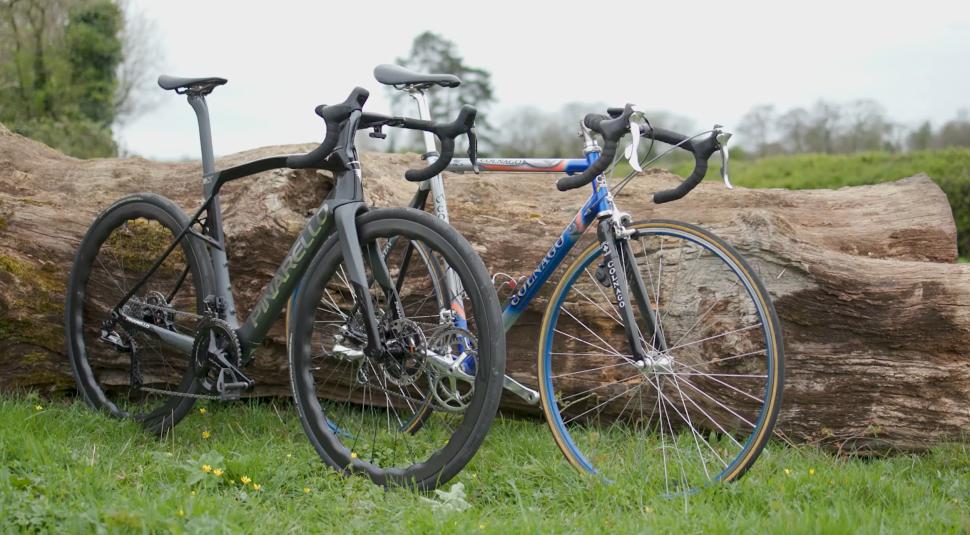
Add new comment
83 comments
Difficult to get a modern GS with, 53/39 chainrings. Instead you get 10 sprocket that wraps the chain tighter.
fancy a ride in the Peak District tomorrow with your 39x23? I'll bring my 34x32 if you don't mind getting dropped on the 10%+ sections - ps I accept no liability for your knees falling apart
The pros on mountain stages seem to be going mainly for 40x30/32 nowadays (except on mad gradients where some have been going 34/32), are they not decent climbers?
As I am not a pro and I don't live in the Pyrenees or Alps, I don't consider that particularly relevant.
That's fine but you didn't offer any such qualifier, you simply stated that a person who is a "decent climber" will "rarely if ever" need a lower gear than 39×23, which, given that even professionals, the epitome of decent climbers, use lower than that, is patent nonsense.
I wrote "or whatever". And "rarely". Hope that is qualifier enough for you. If it isn't I'm afraid I can't help you.
Grand Tours have been won by the likes of Chris Froome on that lower gearing in the mountains. Wouldn't it be fun watching John v Froome in his prime race up the Zoncolan?
I have no idea how I managed with 42x21 back in the day. Actually, I do. I honked and I suffered up the hills. Smaller ratios are a revelation.
Same here, I used to climb Box Hill and Leith Hill out of the saddle most of the time suffering like a dog with my 42/23, thirty years later I'm not that far off the times of my much younger and lighter self using a 34/30.
If I remember rightly the last time I went up Box Hill I was switching between 17 and 19. Maybe it was a different road.
I've been lucky enough to own a Colnago CT1. I've also ridden some top titanium bikes, a Bianchi Infinito CV, Condor Leggero (both carbon), etc.. And the CT1 is still an absolutely excellent bike with impeccable handling and comfort (despite what's said in this review). Tyres play a large part in comfort after all.
I've got the CT2 Colnago - very similar to the CT1 bar some funky chain stays. It has Campag 9spd, 24/27mm tyres, and 12-28, mated to a 54/42/30. Rides beautifully, handles everything I've thrown at it in the 15 years we've been living in Scotland. Might only go up the hills at 5mph, but not a lot of bother coming back down at 50... Oh, and I'm 100kg and in my 60s... On the other hand, my modern carbon bike rides like a plank and the internal cables rattle like it's constantly falling apart.
Compact and subcompact gearing were around from tbe 1930s onwards, so were wide tyres. And so were decent geometries.
Actually in some ways using a road bike from the noughties as your "classic" bike is pretty disingenious.
Bikes are like cars. In the "good" old days joey learnt to tune a car when he was 16. Today it takes an engineer with a computer. Same with bikes. I could build a bike when I was 10 - now I'm not sure I could getting on to 70.
Not so sure things are so bad... my daughters car failed its MOT recently for a mysterious dashboard warning light/engine management problem. A quick Google taught me all I needed to know about diagnostic interface devices and how to use them. I'm sure most 16 Yr olds would have romped though the process.(Although the question does arise...why could my 25yr old daughter with an MA in aerospace engineering not work it out for herself?...once a Dad always a Dad.) As for bikes, I don't think you can equate the increase in complexity of modern cars with the increase bikewise. Di2 and power meters can be avoided, and even this old geezer has got his head around tubeless tyres, pull ratios and hydraulic discs. As a forinstance, when I realised I'd outgrown my second hand 7speed hybrid I was offered a beautiful Roberts tourer which I tried out for a month. Heart said "buy it". Head said I could get a used 1st gen. Arkose for much less money and it would be infinitely more rideable and practical. Head won out and my only regret is that I couldn't buy both. I have no trouble transferring my 5 speed, downtube shifter, cotter pin, screw-on freewheel maintenance skills to newer bikes and it'll be a very cold day in hell when I swop my 46/30 chainset and BB7s for 52/42 and Shimano 600 single pivot calipers on 23mm tyred rims.
"A quick Google taught me all I needed to know about diagnostic interface devices"
Did it also tell you how much it will cost you to buy/lease a tester with all the necessary software, assuming there is one available to the general public that will work with your daughter's car?
Well, a "quick google" by yourself would have exposed the fact that all road vehicles since the late 90s are mandated to have either OBDII or SAE diagnostics exposed via a common interface. Whilst there's a requirement for specialist tools for things like resetting crash data and other safety issues such as airbags and seatbelts, the vast majority of DTCs are diagnosable and resettable via a common protocol. Without having to buy expensive manufacturer specific kit, you can buy Bluetooth OBDII plugs for around £20, and use apps such as Carista or OBDEleven to find and reset 90% of DTCs on a car. I've used this a number of times of my Caddy, for example VW wanted a fortune to fix a yellow light on the dash, I used Carista to find it was a NOx sensor (Euro6, and not running for commuting anymore), diagnosed, replaced and reset, all good. Likewise for recoding new a battery, no specialist kit needed.
A friend of mine has a garage. He regularly spends thousands on testers/software, and there are some things he can't strictly get hold of at all, since he is independent and the manufacturers in question will only provide it to their own garages.
But you clearly know better.
"All I needed to know" turned out to be not that much in the end, but pretty much what Mark1A said below. Certainly enough to ask the right questions of a mechanic, that I wasn't at the mercy of main dealers and had I been really stuck I could have got a plugin widget. Granted, your garage owning friend will understandably need to know (and spend) a lot more. Times have changed since I helped start up and get running a long abandoned 1955 Ford Popular with just a hammer, plug spanner, emery paper and a tin of Easy Start. One of the reasons why I like bikes more than cars.
She has an MA (Master of Arts) in Aerospace Engineering not an MEng? Sounds like a design engineer 🤣
Bikes are like cars.
In no respect whatsoever are bikes in any way like cars.
Well they are both vehicles.
I'm assuming that they were comparing how when you popped the bonnet on an old mini or Capri you could see what was going on and most things were serviceable. Most things on an old bicycle were takeapartable, cleaned, lubed and put back mostly as was. In fact you had to with Shimano bearings. Less so now.
Yup. They were... go back far enough and actually cars were kind of an offshoot of the bike business. As indeed were planes (ignoring those like e.g. Hiram Maxim who took the "ship" in "airship" as suggesting a steam engine...)
Perhaps the "ideal" bike is rather economically self-defeating? If looked after, without crashes it lasts a good chunk of a lifetime, while consuming (mostly) generic parts that can be installed by its owner with a bit of knowledge.
The industry must be profoundly thankful for the pros and the inventors of "performance" components, not to mention electronics and digital tech! Though I wouldn't go back to Everready lights or incandescent dynamo ones.
Pages